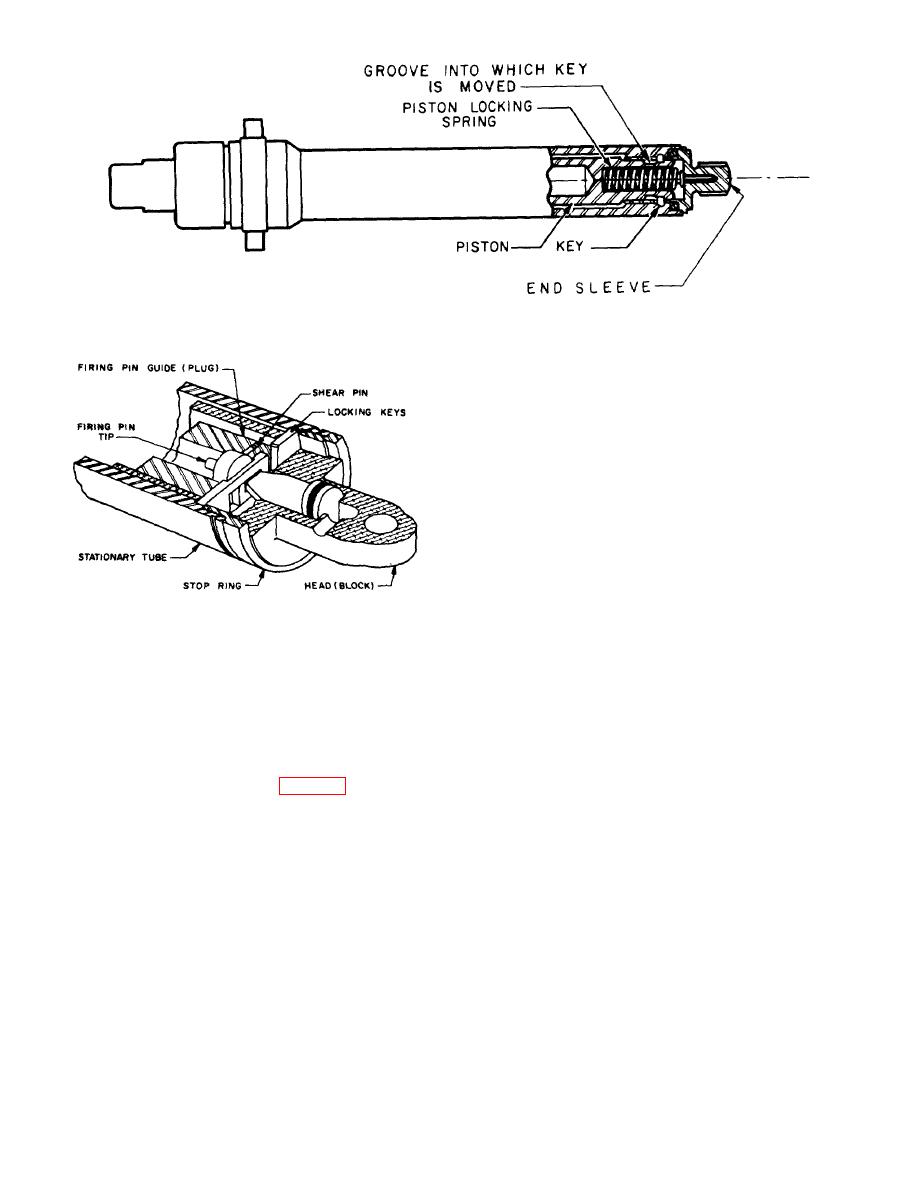
Figure 36. Thruster looking mechanism.
and head is prevented by the sealing effect of the
threaded connection and the obturation of the cartridge
case.
c. The
recommended
diametral
squeeze
dimensions for O-rings which vary according to size and
type of seal, generally decrease the cross-section area
of the ring by approximately 10 percent. Therefore, it is
not necessary to increase diametral squeeze on the seal
past the recommended values, except for pressures
above 3,000 psi.
Whenever O-rings are used in
conjunction with buffer liquids, the materials of the rings
and the liquids must be compatible.
d. O-rings are the most effective seals to retain
buffer fluids, although rubber bags, metal containers,
and sealers have been used satisfactorily in some
items.
Figure 37. Locking keys and firing pin.
e. Where a seal must retain the buffer fluid under
static conditions and seal the gas under dynamic
prevent or retard gas leakage during the firing cycle. In
conditions, tolerances, clearances, and surface finishes
units using a fluid-type damping system, the seals
must be carefully selected. Tests, evaluations, and
prevent the loss of fluid during storage periods, and also
modifications are continued until a satisfactory
prevent or control the leakage of fluid during the firing
combination of conditions is obtained. Some catapults
cycle.
employ a tortuous-path-type seal which has proved
b. The majority of propellant actuated devices rely
effective. This type of seal is, essentially, a close-fitting
on threaded connections and O-rings for sealing. For
coil of wire which fits in a helical groove. The end of the
example, in the initiator shown in figure 31, the chamber
seal wire is provided with a tang which fits into a hole in
is joined to the cap by threads, and the firing pin housing
the tube, locking the wire in position so it cannot spiral
is sealed in the chamber with an O-ring. In stroking
out of the groove and cause the tube to bind.
devices, several O-rings usually serve as static seals
against the entry of moisture while others serve as
moving seals preventing the loss of high pressure gas.
The loss of high-pressure gas at the junction of the body
42


